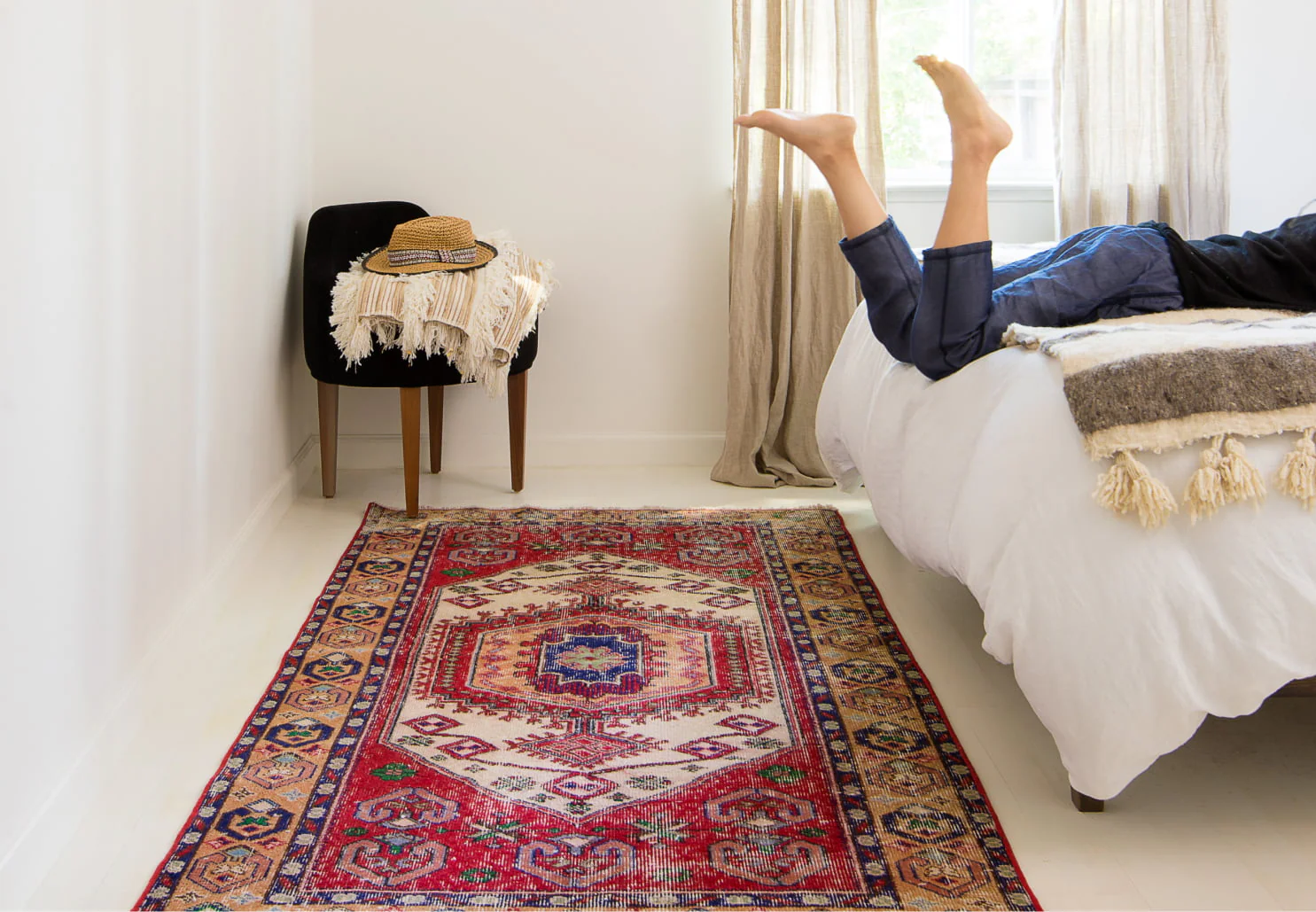










Proudly flatwoven by skilled artisans using time-honored techniques, in Bhadohi, India
Dimensions: 4'10" x 8'0" (147 cm x 244 cm)
Natural inconsistencies are inherent in these unique, handcrafted rugs
Rug Type:
-
Flatweave Rugs
Reversible rugs without pile, also known as kilims, made by hand-weaving horizontal weft yarns through vertical warp yarns
Age:
-
New
Recently woven and never used in a home
Main Color:
- Multicolor
- Stripes—a simple and timeless classic
- Artisanal and tribal, geometric designs feature angular edges and simple shapes—like diamonds, squares, lattices, and stylized animals
- Diamonds are interconnected and repeated throughout to create a dynamic field of both the diamonds and the resulting geometric shapes within the negative space the pattern's negative space
Cotton is a vegetable fiber widely used across rug traditions because of its sturdiness and longevity. Flexible and easy to clean, it has the ability to stay white over long periods of time, maintaining its crispness and vibrancy.
The MakerWe partnered with a small, family-run company who put their flatweave expertise to use on majestic looms made of hundred-year-old timber.
- We recommend that you regularly vacuum your rug to remove dirt and grime. Depending on how heavily your rug is used, just once or twice a month is adequate. Too much vacuuming can wear down the knots and fibers more quickly. If you have a suction attachment on your vacuum cleaner, use that instead of a rotary vacuum.
- Every few months, you’ll also want to flip your rug over and vacuum the back to get the grit out of the foundation of the rug. It also helps to rotate your rug once a year to ensure even wear over time.
- Every 3-5 years, we recommend getting your rug professionally hand-washed. Please do not take it to get steam or dry cleaned—this will almost certainly damage the rug! Hand-washing requires the use of a pH-balanced shampoo, worked into the rug by hand with a soft-bristled brush, before being rinsed thoroughly. This process should be repeated a few times.
- In case of spills:
- Blot the spill until it is dry, but do not add liquid. Consult an Oriental rug specialist immediately for cleaning. Adding liquid can make it harder to remove stains, and can even extend them further. This is because moisture travels along the fiber, so in rugs with horizontal fibers (like flatweaves), it can get trapped.
Order A Sample
Bindo - Rug Sample
Size 12" x 12"
Free shipping & return
Recently Viewed
Bindo Flatweave Rug
![]() Free Shipping
Free Shipping
![]() Easy Returns
Easy Returns
Proudly flatwoven by skilled artisans using time-honored techniques, in Bhadohi, India
Dimensions: 4'10" x 8'0" (147 cm x 244 cm)
Natural inconsistencies are inherent in these unique, handcrafted rugs
- Stripes—a simple and timeless classic
- Artisanal and tribal, geometric designs feature angular edges and simple shapes—like diamonds, squares, lattices, and stylized animals
- Diamonds are interconnected and repeated throughout to create a dynamic field of both the diamonds and the resulting geometric shapes within the negative space the pattern's negative space
Cotton is a vegetable fiber widely used across rug traditions because of its sturdiness and longevity. Flexible and easy to clean, it has the ability to stay white over long periods of time, maintaining its crispness and vibrancy.
The MakerWe partnered with a small, family-run company who put their flatweave expertise to use on majestic looms made of hundred-year-old timber.
- We recommend that you regularly vacuum your rug to remove dirt and grime. Depending on how heavily your rug is used, just once or twice a month is adequate. Too much vacuuming can wear down the knots and fibers more quickly. If you have a suction attachment on your vacuum cleaner, use that instead of a rotary vacuum.
- Every few months, you’ll also want to flip your rug over and vacuum the back to get the grit out of the foundation of the rug. It also helps to rotate your rug once a year to ensure even wear over time.
- Every 3-5 years, we recommend getting your rug professionally hand-washed. Please do not take it to get steam or dry cleaned—this will almost certainly damage the rug! Hand-washing requires the use of a pH-balanced shampoo, worked into the rug by hand with a soft-bristled brush, before being rinsed thoroughly. This process should be repeated a few times.
- In case of spills:
- Blot the spill until it is dry, but do not add liquid. Consult an Oriental rug specialist immediately for cleaning. Adding liquid can make it harder to remove stains, and can even extend them further. This is because moisture travels along the fiber, so in rugs with horizontal fibers (like flatweaves), it can get trapped.






